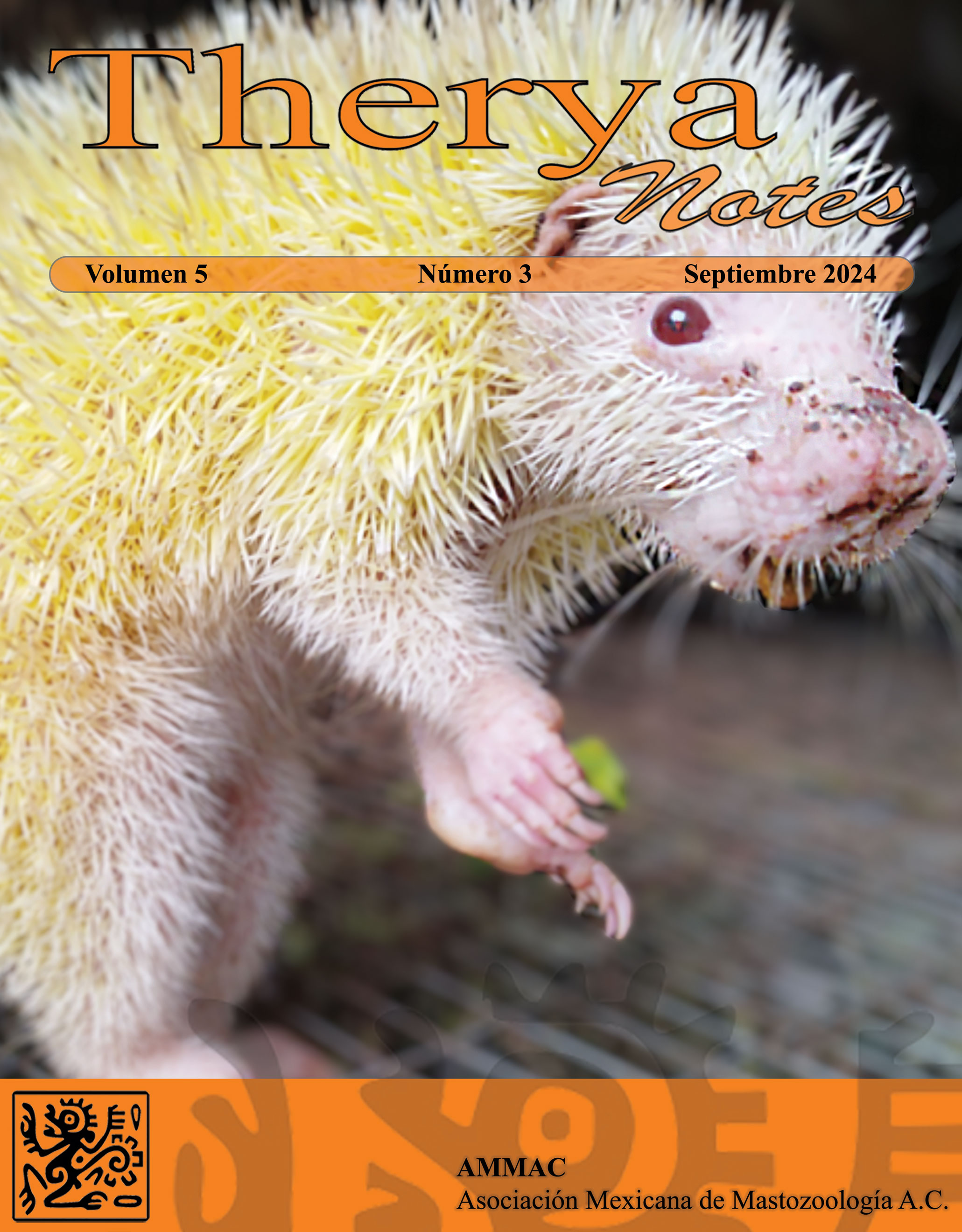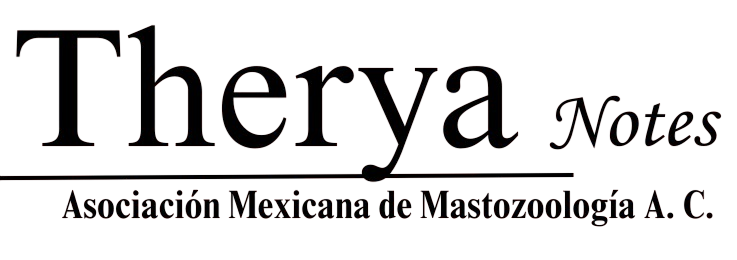Nesting of the variegated squirrel, Echinosciurus variegatoides rigidus, on a power line pole using plastic ropes and a weedy plant in Cañas, Costa Rica
DOI:
https://doi.org/10.12933/therya_notes-24-188Keywords:
Commelina, Costa Rica, dreys, electrical infrastructure, plant material, SciuridaeAbstract
Arboreal squirrels construct dreys using twigs, often cut from living trees. Some species use plant material to fill out the structure, but anthropogenic materials are occasionally incorporated as well. In Costa Rica, there are 5 squirrel species, the variegated squirrel, Echinosciurus variegatoides, being the largest and most common. This species builds nests of leaves and twigs high in the trees. On November 6, 2021, while traveling from our base to a protected area for wildlife monitoring, we stopped in Cañas, Guanacaste, in northwestern Costa Rica. At 15:00 hr, we observed a variegated squirrel nesting on a power line pole. We monitored the squirrel's behavior for approximately 10 min and recorded the observations with photographs and 2 videos. The squirrel was observed nesting on the platform between a power line pole and an electrical transformer. The nest was constructed using a combination of green leaves, twigs, and plastic ropes of at least 3 different colors, indicating they might be of different types. The plant material used in the nest construction was identified as Commelina sp., a problematic weedy plant. This finding is novel, as there are no previous reports of this species nesting on such infrastructure, which has not been documented as a nesting site for squirrels. Furthermore, there are few known instances of squirrels using anthropogenic materials for nesting. We discuss this case in the context of squirrel nesting behavior in Costa Rica and the implications of current urban development.
Downloads
Published
How to Cite
Issue
Section
License
THERYA NOTES is based on its open access policy allowing free download of the complete contents of the magazine in digital format. It also authorizes the author to place the article in the format published by the magazine on your personal website, or in an open access repository, distribute copies of the article published in electronic or printed format that the author deems appropriate, and reuse part or whole article in own articles or future books, giving the corresponding credits. The Creative Commons CC BY-NC-SD license is used.![]()















